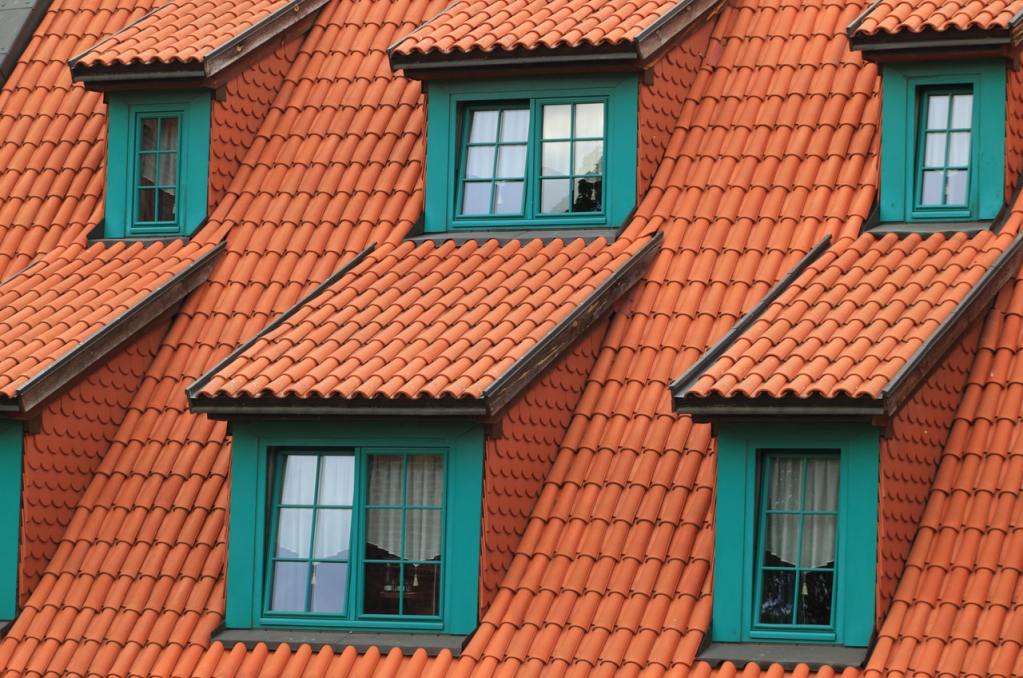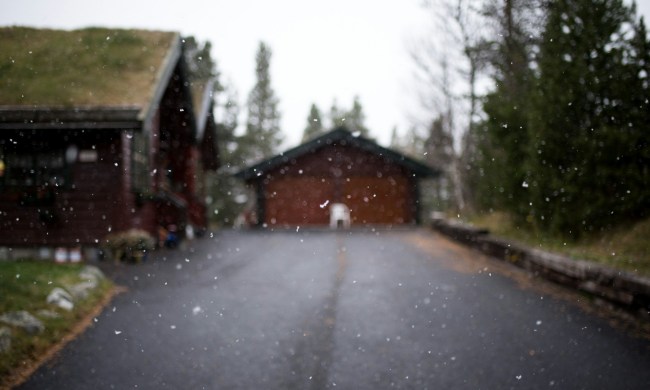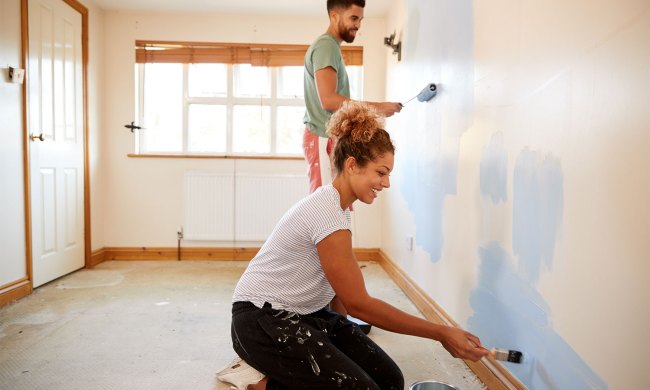Knowing how to find a roof leak early can save you from costly repairs and extensive water damage. A small leak can quickly turn into a major problem, compromising your home’s structural integrity, insulation, and even indoor air quality. But finding the source of a leak isn’t always straightforward. Water has a sneaky way of traveling away from the point of entry before showing visible signs inside your home.
That’s why we’re going to walk you through how to find your roof leak as quickly as possible.
Most common causes of roof leaks

Roof leaks can stem from a variety of issues, many of which develop over time due to wear and tear, severe weather, or poor installation. Some of the most common causes include:
- Damaged or missing shingles: High winds, hail, and aging can cause shingles to crack, curl, or fall off completely, exposing the underlying roofing materials.
- Clogged gutters: When gutters get blocked with leaves, dirt, or debris, water can overflow and seep into the roofline.
- Cracked flashing: Flashing seals joints and seams on your roof. If it becomes cracked or improperly installed, water can seep through.
- Worn-out seals around vents and chimneys: The rubber boots and metal flashing around vents, chimneys, and skylights can degrade over time, leading to leaks.
- Ice dams: In colder climates, ice dams can form along the roof’s edge, preventing proper drainage and forcing water under the shingles.
- Improperly installed roofing materials: If roofing materials are installed incorrectly, even a new roof can develop leaks.
Early signs of a leak in your roof

Roof leaks don’t always start with obvious water dripping from the ceiling. Instead, they often present subtle warning signs long before major damage occurs. One of the first indicators is water stains on ceilings or walls. These stains often appear as discolored patches that gradually grow larger over time.
You might also notice a musty odor in certain rooms, which could indicate mold or mildew growth caused by hidden moisture. Peeling paint or bubbling wallpaper is another red flag, as trapped moisture can push against surfaces and cause them to separate.
In some cases, you may spot damp insulation in your attic, which is a strong sign that water is infiltrating your home. Additionally, during heavy rainfall, listen for dripping sounds in walls or ceilings, even if you can’t see water yet.
How to find a roof leak: With attic access

If you have access to your attic, finding a roof leak becomes much easier:
- Inspect your attic: Start by grabbing a flashlight and carefully inspecting the attic on a rainy day or shortly after precipitation. Look for dark, damp spots on the underside of the roof sheathing or rafters. These areas will often feel soft or spongy to the touch.
- Get your hose out: If it’s not raining, another method is to use a garden hose. Have someone spray water onto different sections of the roof while you remain in the attic, watching for any drips or moisture seeping through.
- Trace the flow: Tracing water stains or moisture trails back to their highest point in the attic will help you locate the leak’s origin. Keep in mind that the entry point might not be directly above the visible damage inside your home. Water can travel along roof panels or beams before finally dripping down.
- Follow the light: Another trick is to check for daylight coming through the roof. Small gaps or holes, especially around vents or chimneys, could be the source of the leak.
How to find a roof leak: With no attic access

If you don’t have attic access, pinpointing a roof leak requires a different approach.
- Start by inspecting your ceiling for stains, bulging areas, or peeling paint. These signs indicate where moisture is accumulating.
- Next, examine your roof from the outside. Look for missing or damaged shingles, cracked flashing, or areas where debris has built up. Pay extra attention to valleys and areas around vents, chimneys, and skylights.
- The hose test is also effective without an attic. With a helper inside the house watching for leaks, systematically spray water onto different sections of the roof. Start low and work your way up. Allow water to run for a few minutes in each section, giving time for any leaks to show.
- If you can’t find the exact entry point, check exterior walls and windows as well. Sometimes, water intrusion may be due to siding or improperly sealed window frames rather than the roof itself.
Next steps for dealing with roof leaks

Once you’ve identified a roof leak, it’s important to take immediate action to prevent further damage. Here’s what to do next.
1. Ensure it’s actually a roof leak
Not all water damage is caused by a roof leak. Before making any repairs, rule out other possible sources. Plumbing leaks, condensation from poor ventilation, or even a backed-up HVAC system can cause similar issues.
2. Stop the flow of water
If water is actively dripping, place a bucket or container underneath to catch it. This helps minimize damage to drywall, floors, and furniture. You can also put down towels or a plastic sheet to prevent water from spreading further.
3. Prevent damage to belongings
Move any valuables, electronics, or furniture away from the affected area. Water can cause wood to warp, fabric to stain, and electronics to short circuit. If moving items isn’t possible, cover them with plastic sheeting or waterproof materials to protect them.
4. Call a roofing pro
While minor leaks can sometimes be patched with temporary fixes, it’s best to call a professional roofer for a long-term solution. A professional can thoroughly inspect the roof, diagnose the issue, and provide necessary repairs to prevent further leaks.
Finding a roof leak before it causes serious damage requires careful observation and a proactive approach. By recognizing the early warning signs, inspecting your attic or exterior, and taking immediate action, you can prevent costly repairs and protect your home from structural issues. Whether you handle minor repairs yourself or call in a roofing expert, addressing a leak promptly ensures your roof stays in top condition for years to come.




